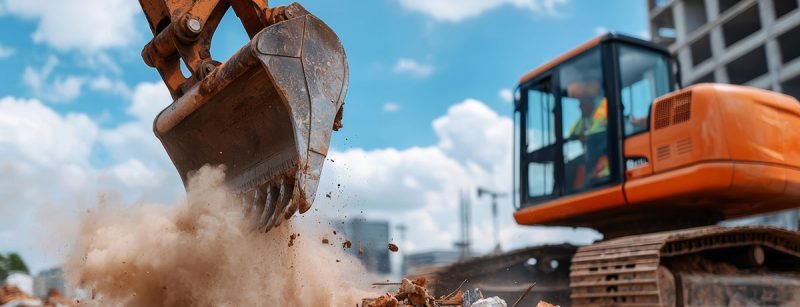Heavy Equipment’s Role in Air Quality Management: Key Insights for Sustainable Practices
Heavy equipment is essential in construction and agriculture, powering everything from infrastructure projects to food production. However, these machines have a significant impact on air quality, influencing both outdoor and indoor environments at job sites. Understanding and managing this impact—while staying compliant with regulatory standards—is vital for sustainable operations. Here’s what StrategicSolvers recommends for enhancing air quality standards while maintaining workplace safety.
Heavy Equipment and Air Quality
Most heavy machinery runs on diesel engines, emitting pollutants like nitrogen oxides (NOx) and particulate matter (PM). Diesel engines can produce 15–60 times more PM than gasoline engines, contributing heavily to air pollution on worksites. This is especially concerning in industries like construction and agriculture, where equipment like bulldozers, tractors, and excavators are extensively used.
Beyond fuel emissions, heavy machinery releases carbon monoxide (CO) and volatile organic compounds (VOCs), both of which contribute to ground-level ozone and smog. In fact, VOC levels indoors can be up to 1,000 times higher than outdoor levels, causing potential health issues, including respiratory problems and damage to organs such as the liver and kidneys.
Prolonged exposure to these pollutants can affect workers and nearby communities, with risks linked to health issues like asthma and cardiovascular disease.
Indoor Air Quality Considerations
In confined or poorly ventilated spaces, heavy equipment can significantly degrade indoor air quality on job sites, leading to unhealthy conditions. Prolonged exposure to diesel exhaust indoors is associated with a 40% increased risk of lung cancer, highlighting the importance of ventilation and air-quality management.
Regulatory Standards and Compliance
Environmental impact from heavy machinery is governed by various standards aimed at emission reduction:
- EPA Tier Standards: These regulations set emissions limits for non-road diesel engines. By Tier 4, finalized in 2015, manufacturers must implement emission-control technologies to meet stringent NOx and PM limits.
- Clean Air Act (CAA): This law regulates national air pollution, with state-specific implementation plans to meet federal air standards. Non-compliant equipment may face restrictions or require retrofits to align with CAA standards.
- OSHA Guidelines: OSHA mandates permissible diesel exhaust levels in indoor environments to protect worker health. Exceeding these limits can lead to fines, making air-quality monitoring critical for compliance.
Tips for Meeting Air Quality Standards
Here are some practices StrategicSolvers suggests to help keep your operations compliant and protect air quality:
- Routine Maintenance: Regularly service engines, filters, and exhaust systems to keep equipment running efficiently and reduce harmful emissions.
- Upgrade to Cleaner Equipment: Consider replacing older machinery with newer models that meet Tier 4 standards. Though initially costly, these upgrades cut emissions significantly and can reduce potential fines while improving air quality.
- Limit Idle Time: Reducing idling is an easy way to cut emissions. A no-idling policy saves fuel and minimizes pollution.
- Use Diesel Particulate Filters (DPFs): For equipment that doesn’t meet Tier 4 standards, DPFs capture up to 99% of PM emissions, making them a valuable retrofit for older machines.
- Improve Site Ventilation: Ensure proper ventilation on indoor jobs by using fans and exhaust systems to disperse diesel fumes, improving both air quality and safety.
Staying Informed
As environmental standards evolve, staying updated on regulatory changes is crucial. Heavy equipment manufacturers often introduce new technologies and updates to meet these laws. Keep an eye on industry reports or consult with environmental agencies to ensure compliance, and consider state incentives for adopting greener tech.
For all your heavy equipment needs, StrategicSolvers offers a range of environmentally friendly solutions to support compliance, sustainability, and operational efficiency. Let us help you pave the way to a cleaner, safer work environment.






